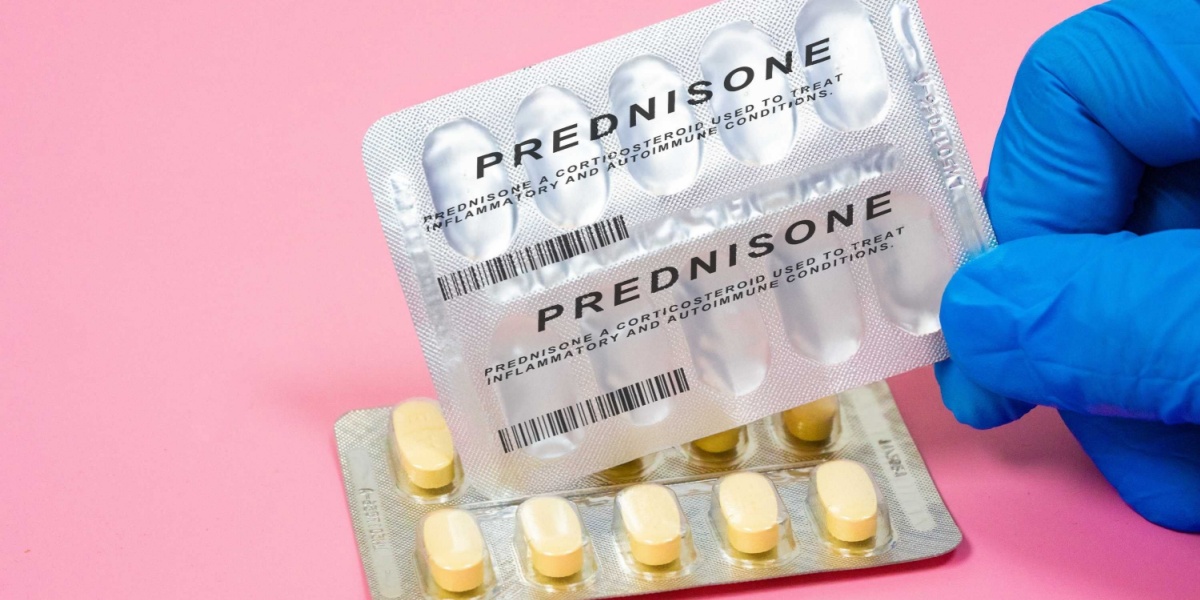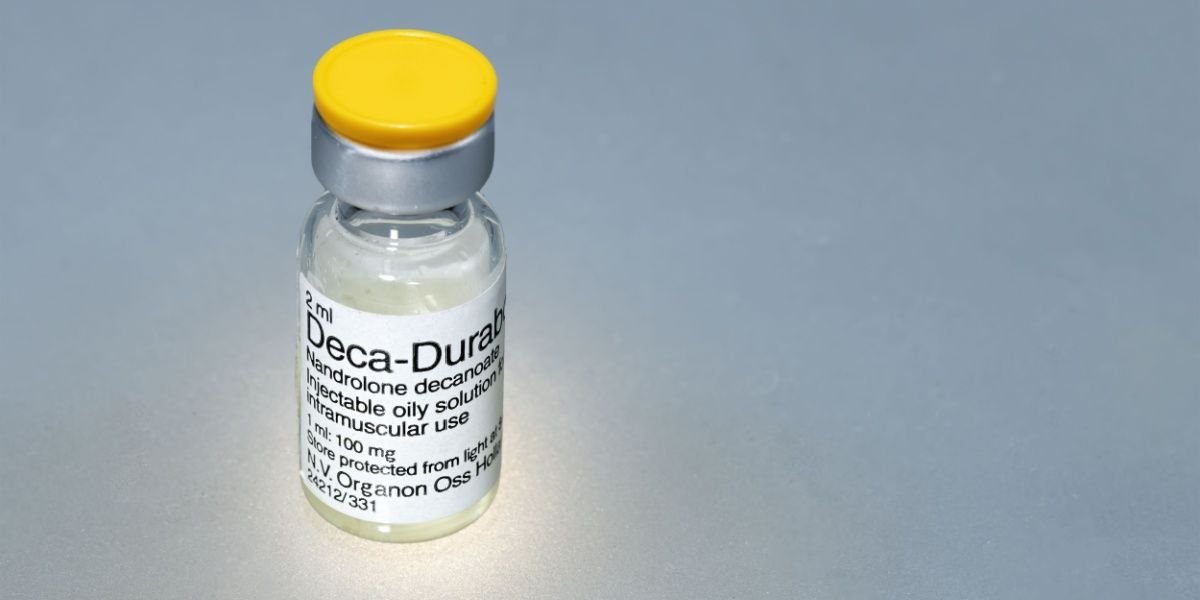Prednisone is a potent synthetic corticosteroid used to reduce inflammation and suppress the immune system. [1] Prednisone is prescribed for a wide range of conditions, from asthma and severe allergies to rheumatoid arthritis, lupus, and other autoimmune diseases. [2]
While prednisone can be highly effective (even life-saving in severe cases), it also carries significant risks.
- Prednisone is a corticosteroid medication used to treat various inflammatory and autoimmune conditions (e.g., asthma, allergies, arthritis) by rapidly reducing inflammation.
- Prednisone side effects can affect nearly every system. Common issues include weight gain (with fat redistribution), elevated blood sugar, high blood pressure, bone loss (osteoporosis), and increased infection risk. Mood changes (insomnia, mood swings, or euphoria) are also frequent, and high doses can rarely trigger psychiatric reactions.
- Doctors aim for the lowest effective prednisone dosage for the shortest duration. People who take prednisone long-term require monitoring (blood pressure, blood sugar, bone health, etc.) and must taper off the drug gradually – never stop prednisone abruptly to avoid dangerous withdrawal symptoms.

What is prednisone?
Prednisone is a corticosteroid (steroid hormone) that mimics cortisol, a natural anti-inflammatory hormone from the adrenal glands. It broadly dampens inflammation and immune activity. [1] Thanks to these effects, prednisone is used to treat many conditions: it opens airways in asthma, soothes swollen joints in arthritis, and calms overactive immune responses in lupus and other autoimmune diseases. [2]
In severe allergic reactions or asthma exacerbations, prednisone can prevent life-threatening complications by rapidly reducing inflammation. Its benefits, however, must be balanced with its side effects, so prednisone is used only when necessary and in carefully managed doses. [3]
Prednisone dosage and formulations
Prednisone comes in oral tablets (including delayed-release forms) and as a liquid solution. [2]
Doses vary widely depending on the condition. For an acute flare, a high-dose short course of prednisone (for example, 40–60 mg per day for a week) may be prescribed. Chronic conditions may require lower daily doses (e.g., 5–10 mg) over longer periods. [4]
Doctors strive to use the smallest effective dose of prednisone for the shortest time. If therapy must continue long-term, the regimen may be adjusted to minimize side effects. Significantly, when stopping prednisone after more than a couple of weeks, the dose must be tapered gradually rather than halted abruptly. [2]
Physical side effects
- Prednisone also raises blood sugar, sometimes causing temporary steroid-induced diabetes, and it can elevate blood pressure by causing fluid retention (swelling of limbs). [5]
- Long-term use can weaken bones, leading to osteoporosis and an increased risk of fractures. [5]
- Because prednisone suppresses the immune system, prednisone makes infections more likely – even mild infections (like oral thrush) occur more frequently, and high doses predispose to serious infections such as pneumonia. [5]
Rare and long-term effects
- Prednisone causes weight gain with a distinctive fat redistribution – patients develop a rounded “moon face” and fat pads on the back of the neck/upper back (a “buffalo hump”). [5]
- The skin becomes thin and fragile, with easy bruising and purple stretch marks appearing. Additionally, acne or increased body hair (hirsutism) can develop. [5]
Cognitive & psychiatric effects
Prednisone can affect the mind and mood. Many patients on higher doses report insomnia, irritability, or mood swings, and some feel a burst of energy or euphoria. [6]
Long-term therapy is more often associated with depression or fatigue as the treatment goes on. [6] Rarely, high doses of prednisone can trigger steroid psychosis – mental disturbances like hallucinations or delirium. [7]
Very prolonged steroid use has also been linked to rare cases of memory impairment (sometimes called steroid dementia syndrome). [8]
Most psychiatric side effects improve after the prednisone dose is lowered or stopped.
Special considerations: Who should be extra careful
- People with diabetes, high blood pressure, heart disease, or osteoporosis should use prednisone cautiously, as it can worsen these conditions. [9]
- People with active infections (or a history of tuberculosis or chronic infections) typically need to treat the infection first, as prednisone weakens their immune defenses. [2]
- Children on long-term steroids must be monitored for growth problems (steroids can slow growth). [10]
- Pregnant women are given prednisone only if necessary, as there are potential risks to the baby (though it may be crucial for certain conditions). [11]
- Prednisone also interacts with many drugs. For example, using NSAIDs (like ibuprofen or aspirin) together with prednisone increases the risk of ulcers or stomach bleeding. [2]
- The herbal supplement St. John’s wort can reduce prednisone levels by speeding its breakdown [12], while certain antifungal or HIV medications can intensify steroid side effects.
- Live vaccines should be avoided during prednisone therapy because the drug’s immune suppression can make vaccines less effective and even lead to infection from the vaccine. [2][13]
Safe use and monitoring
Doctors aim to use the minimum effective dose of prednisone and will monitor patients during treatment. [14]
People who use prednisone long-term typically have regular check-ups for blood pressure and blood sugar, and may undergo periodic blood tests to watch for side effects. Bone density scans are often recommended if steroids are used for an extended time (to detect early bone loss). [5]
Lifestyle measures can help mitigate side effects. A low-sodium, high-potassium diet and adequate intake of calcium/vitamin D are often recommended to counteract fluid retention and bone loss. Regular exercise can help maintain muscle and bone strength.
Alternative & complementary approaches
Because of prednisone’s side effects, doctors often use other treatments to minimize long-term steroid use. In many chronic illnesses, steroid-sparing immunosuppressants or biologic drugs can control inflammation, allowing for lower prednisone doses (or none at all). [5]
Non-drug measures, such as physical therapy, exercise, and anti-inflammatory diets, are also employed to help manage the condition with fewer steroids. The goal is to treat the underlying disease while using prednisone as sparingly as possible.
Dependence and withdrawal
After sustained use, the body becomes dependent on prednisone. The adrenal glands decrease their natural cortisol production, so stopping prednisone suddenly can cause severe withdrawal symptoms. These may include: [15]
- Profound fatigue
- Weakness
- Body aches
- Lightheadedness
- Low blood pressure
For this reason, a gradual dose reduction (taper) is mandatory when discontinuing prednisone.
Tapering off prednisone
Tapering means slowly reducing the dose over time rather than stopping abruptly. This gives the adrenal glands time to resume normal cortisol production. Always follow your doctor’s taper schedule – it is essential to prevent withdrawal symptoms and adrenal crisis, a serious condition that occurs when the body doesn’t produce enough cortisol, leading to severe fatigue, low blood pressure, and even life-threatening complications. [14]
Prednisone abuse
Prednisone doesn’t cause a euphoric “high,” but rare cases of prednisone abuse have been documented. These typically involve people who continue taking prednisone (or obtain extra prescriptions) due to a psychological dependence on its effects. [16]
Such individuals may develop tolerance and experience steroid withdrawal symptoms if they miss doses. [16] This addiction-like behavior is highly uncommon, but it underscores the importance of using prednisone only as prescribed.
Prednisone addiction treatment
Treatment of prednisone addiction centers on a medically supervised taper to safely wean the person off the drug. [14] Doctors will substitute other therapies to manage the underlying condition so that steroids can be discontinued. [5]
Supportive care is provided during the taper (and counseling if needed) to help the patient cope with withdrawal and psychological dependence. Over time, with gradual dose reduction, the body’s natural cortisol production recovers, and the patient can safely discontinue prednisone.




